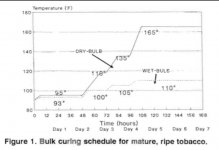log roller
Member
I am still not sure what the benefit is?
Like the "gold" varieties of old. The buds are left on the plant and they stop watering. The buds dry "on the vine" and turn golden yellow. But it's mainly a novelty.
I am just not sure why you would do this to quality smoke?
Not trying to piss on your parade I just think it is an odd practice?
If you have not yet tried cobbing, follow Tangwena's thread and try it. Upon smoking the finished product you will immediately see what the point is. And then you'll wish you had put the whole plant in the cob, rather than just a small piece.



 Lighten up and eat a friggin log yo.
Lighten up and eat a friggin log yo.

